If you’ve ever written a blog post or online article, you’ve asked the question before: How long should this be?
In other words, what’s the optimal length of web content for SEO purposes?
Depending on the year and the source, you might hear the ideal word count for SEO is anywhere from 250 to more than 2,000 words per piece.
Proponents of lower word counts will argue it’s not the number of words but the quality of the information and the number of backlinks that matter most.
Those who advocate for higher word counts claim that too few words will be scored as “thin” content by search engines and, thus, not rank as highly as more verbose counterparts.
So, what’s the truth? Does word count really matter that much to search engines? And if so, what’s the best length for pieces of content?
According to Google’s John Mueller, the fount from which so much search engine knowledge flows, the number of articles is not included in Google’s quality scores.
So, that’s it, right? Case closed, the shortest article in the history of Search Engine Journal has confirmed that you don’t need to worry about word counts.
Not quite.
Word count is not a direct SEO ranking factor, but it’s still something you need to keep in mind.
In the course of this piece, we’re going to discuss why it matters, how the length of your pieces can both indirectly help and hurt your rankings, and give you some pointers for helping you write pieces that are the ideal length for your needs.
“Go With 2,000 Words & An Optimized H1”
That’s SEO advice in a nutshell.
But is it the best practice, common knowledge, or an urban myth?
As previously mentioned, there’s no consensus on the perfect word count, but there is a general rule to follow: Generally speaking, long-form content tends to outperform shorter content.
If you think about it, this makes a lot of sense. Google’s algorithm seeks to gauge search intent, and longer pieces help give it a better idea of what your page’s content is all about.
So, bigger is always going to be better, right? Not necessarily.
If you’re just fleshing out articles by adding extra phrases, unnecessary adjectives, and adverbs or purposely taking a circuitous path to the point, you’re going to turn off readers. And that will hurt your quality scores.
So, every article needs to be as long as it needs to be. Clear as mud, right? Don’t worry. We’ll explain further.
It’s Not Content-Length That Ranks An Article – But The Backlinks That Are Correlated With The Length
Yoast performed a study in 2022 that included information about the correlation between post length and SEO ranking. It determined that a minimum word count depends upon the page type.
As a general rule of thumb, Yoast suggests taxonomy pages (those used for classifying content and data) should be 250 or more words, regular posts and pages should be 300 or more, cornerstone content pages should land north of 900 words, and product pages require a measly 200+ words.
As you can see, that’s a lot of variety.
Taxonomy and product pages tend to work fine with fewer words because they’re highly specific. And users don’t generally land on them directly from search results and instead dive into them from higher up the website.
For example, if you’re shopping for a new set of kitchen knives, you’re likely not searching for [Wusthof Performer 8” Chef’s Knife]. Instead, you’re going to search for [Good Chef’s Knife] and drill down from the Wusthof or retailer’s general page.
On the end of the spectrum, longer content is usually more focused on providing useful information. This, in turn, tends to earn more backlinks.
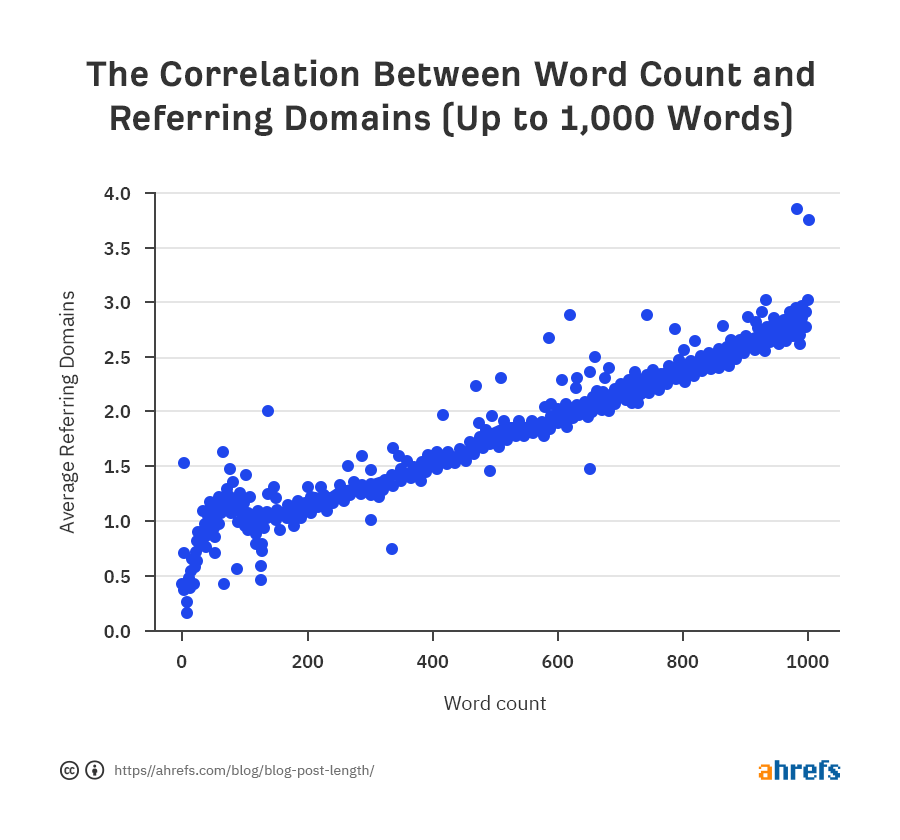 Screenshot from Ahrefs.com, September 2022
Screenshot from Ahrefs.com, September 2022
A 2020 study by Ahrefs analyzed around 900 million webpages and found a strong positive correlation between word count and the average number of referring domains.
In another 2020 study, Ahrefs found almost 91% of all pages never get any organic traffic. And that seems to be predominantly because they do not have any backlinks:
“It looks like 66.31% of pages don’t have even a single backlink. And 26.29% of pages have links from less than three websites.”
So, the impact of content length on rankings seems a two-step process rather than an “if longer, then ranks better” equation.
The path to ranking success looks like this:
- Longer content leads to more links.
- More links lead to better rankings (and more organic traffic).
It seems what might be ranking the website is not so much about the content length itself but more about the number of links the page received.
Guides, skyscrapers, pillar pages, and content hubs make the most interesting link targets. Thus, it is recommended to create the most conclusive, interesting, and in-depth piece of content on the web and run an extensive outreach campaign for it.
Making it sexy might not even need more words. Instead, it might just be a matter of more accurate targeting, better graphics, or detailed market research results.
Answer Search Intent Effectively By Starting Your Article With The Most Important Information
Ahrefs’ advice on content length:
“Don’t shoot for a particular word count — just make sure you cover a topic in full. Whether that takes 500 words or 10,000, the key is that you are creating the best resource available for your target keyword.”
In other words, your content should be as long as it needs to be to give search bots enough information to determine what it’s about and long enough to satisfy user queries.
What Does It Take To Satisfy Search Intent?
For many years, SEO professionals have been trying to write longer content, no matter the cost of usability. This led to fluffed-up super-long pieces instead of the word count that is relevant to your goals.
It might have also inspired Google to push the featured snippets – and give answers instantly instead of providing a bad user experience with scroll marathons.
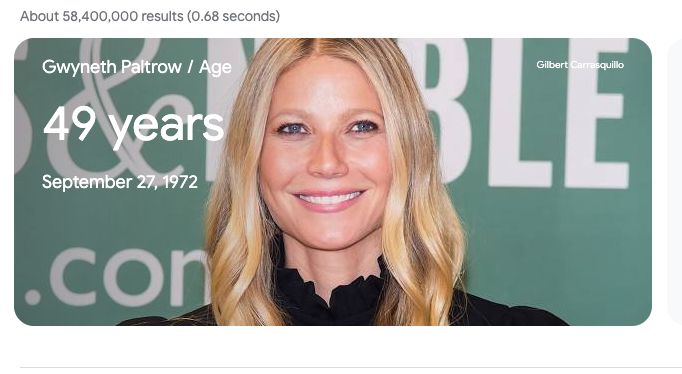 Screenshot from Google search, September 2022
Screenshot from Google search, September 2022
It wasn’t so very long ago that a “how to lower bounce rate” query would return page one results that talk about the importance of bounce rate for 700 words before even revealing the first tip on how to decrease it.
But if we needed an introduction on bounce rate, we would have Googled it. These pieces clearly fail search intent.
Thankfully, Google has gotten smarter, and these types of returns are less common than they once were, but they should still serve as an invitation to rethink content creation and meet search intent.
I recommend turning your content structure upside down – and thus providing value to the user from the first second they arrive at your page.
Turn your SEO article into a newspaper article or executive summary:
Most important information first = Answer the question.
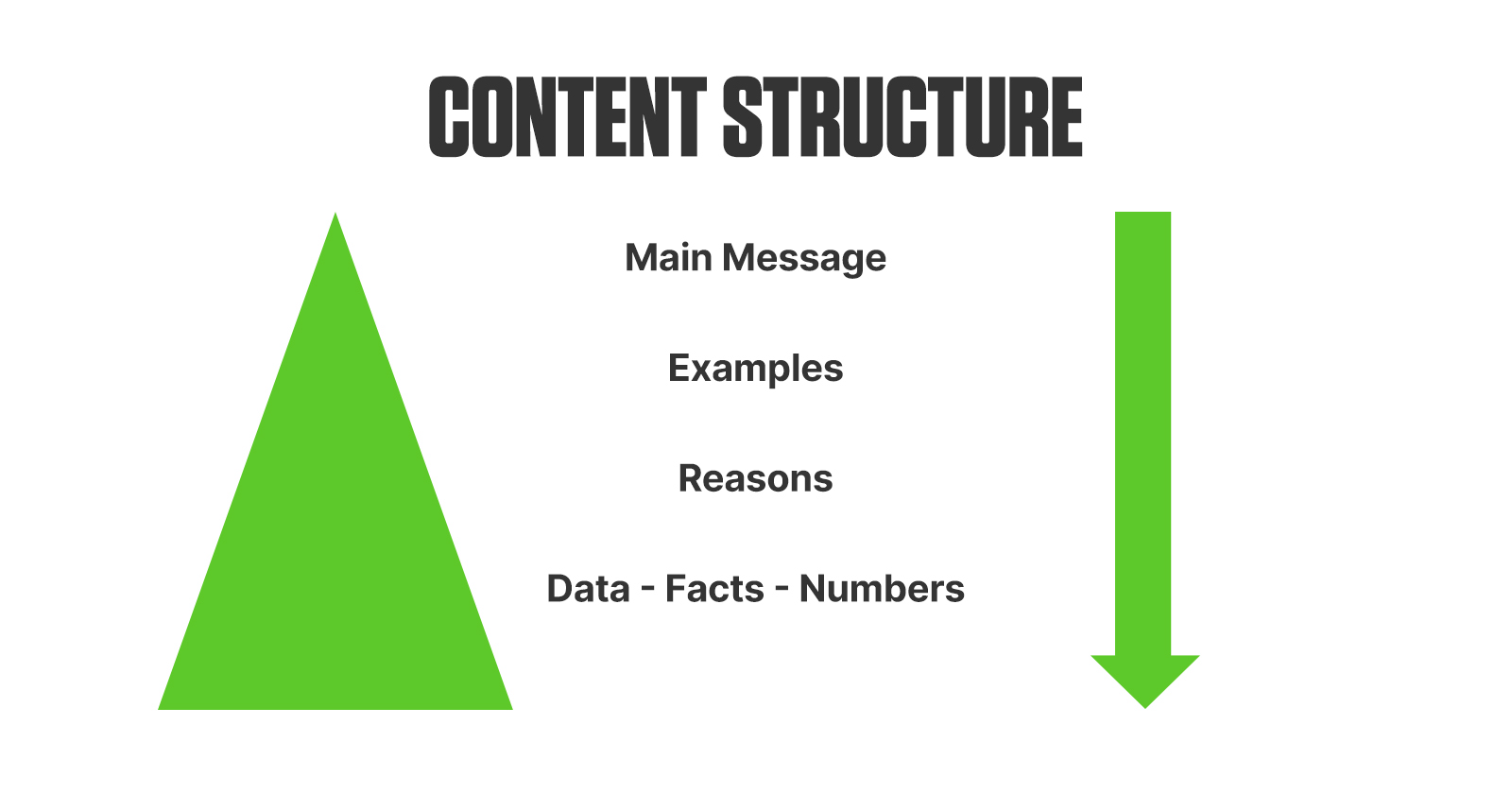

Start with the main message.
Then go into depth as the piece continues, and detailed-focused users continue reading.
Secondly, give users a clear path to convert and make the next clicks.
This matters for your business, revenue, and marketing goals, but also for the users who came to the website with a certain intention. Make it easy for them to find what they need.
This can include:
- Links/read more to related articles.
- Sign-up for a whitepaper or how-to guide.
- Buy the product.
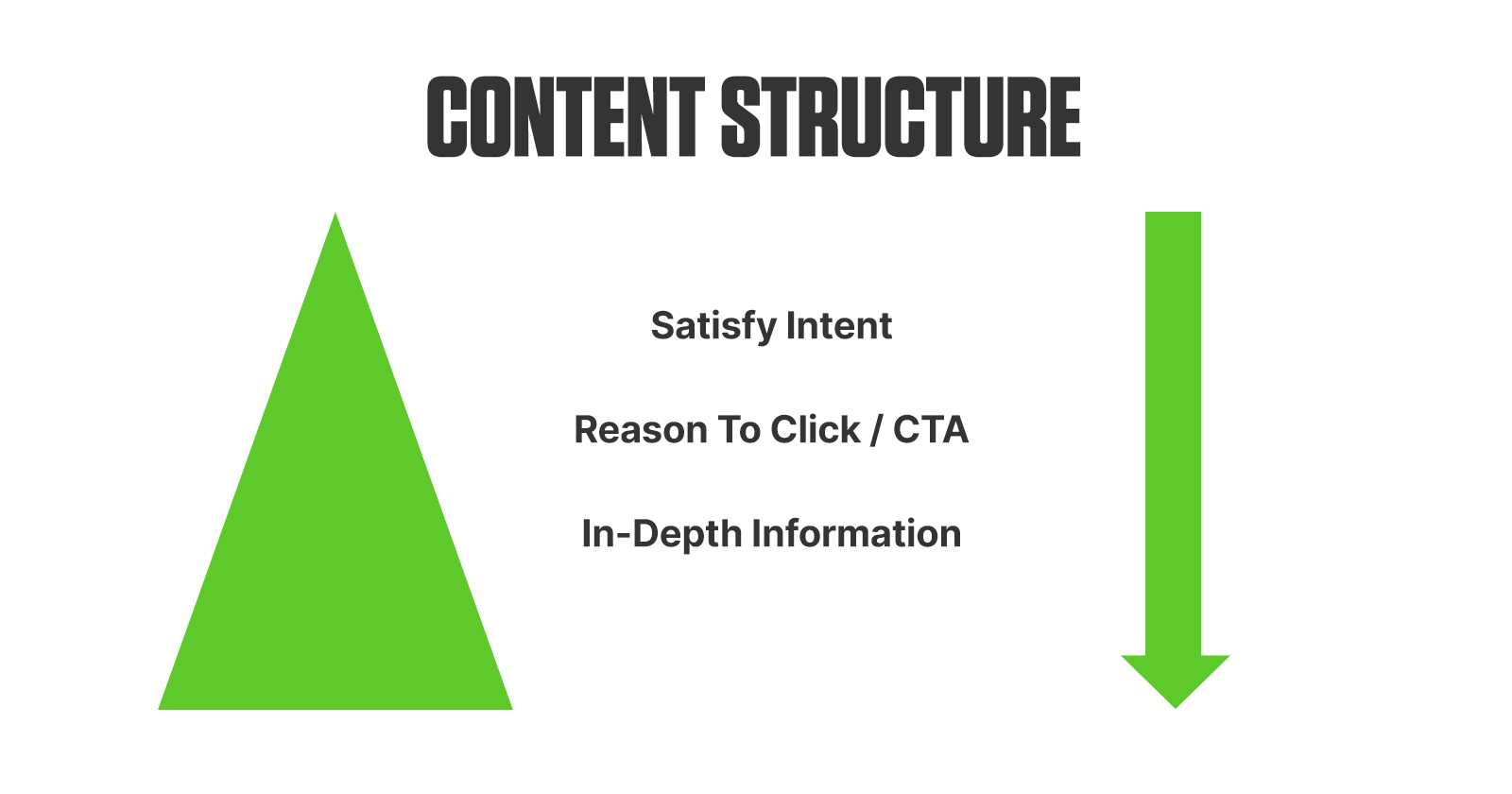

Fluffing Hurts The Content Ontology & Thus Your Keyword/Topic Targeting
The main reason I would like you to think about satisfying search intent is content ontology and the hierarchy between keywords and articles.
This is something that Google has been considering as well, as thin pages, duplicate content, and keyword cannibalization can all now negatively affect your SEO results.
Getting search intent right will also allow you to build a clean website architecture – making it easier for Googlebot to crawl and index your site.
If we are mindlessly aiming for 2,000 words to write about a topic such as “apples” (as per best-case practice), we will quickly realize that most writers and SEO pros tend to talk about “bananas” and “oranges” when running out of things to say about “apples.” They are trying to hit their target word count no matter what it takes.
This is diluting the keyword targeting of a page – and your ability to hit search intent.
Instead of making it clear to Google that this is the best page about “apples,” we are now confusing users and the search engine about the purpose and topic of the content piece.
We call this content cannibalization when we talk about “fruits” in general to forcefully extend our piece about “apples” to hit the target word count.
It’s called keyword cannibalization when we confuse Google so much that it doesn’t know which piece to rank for the query “apples,” which causes it to alternate between the two – hurting your overall ranking performance.
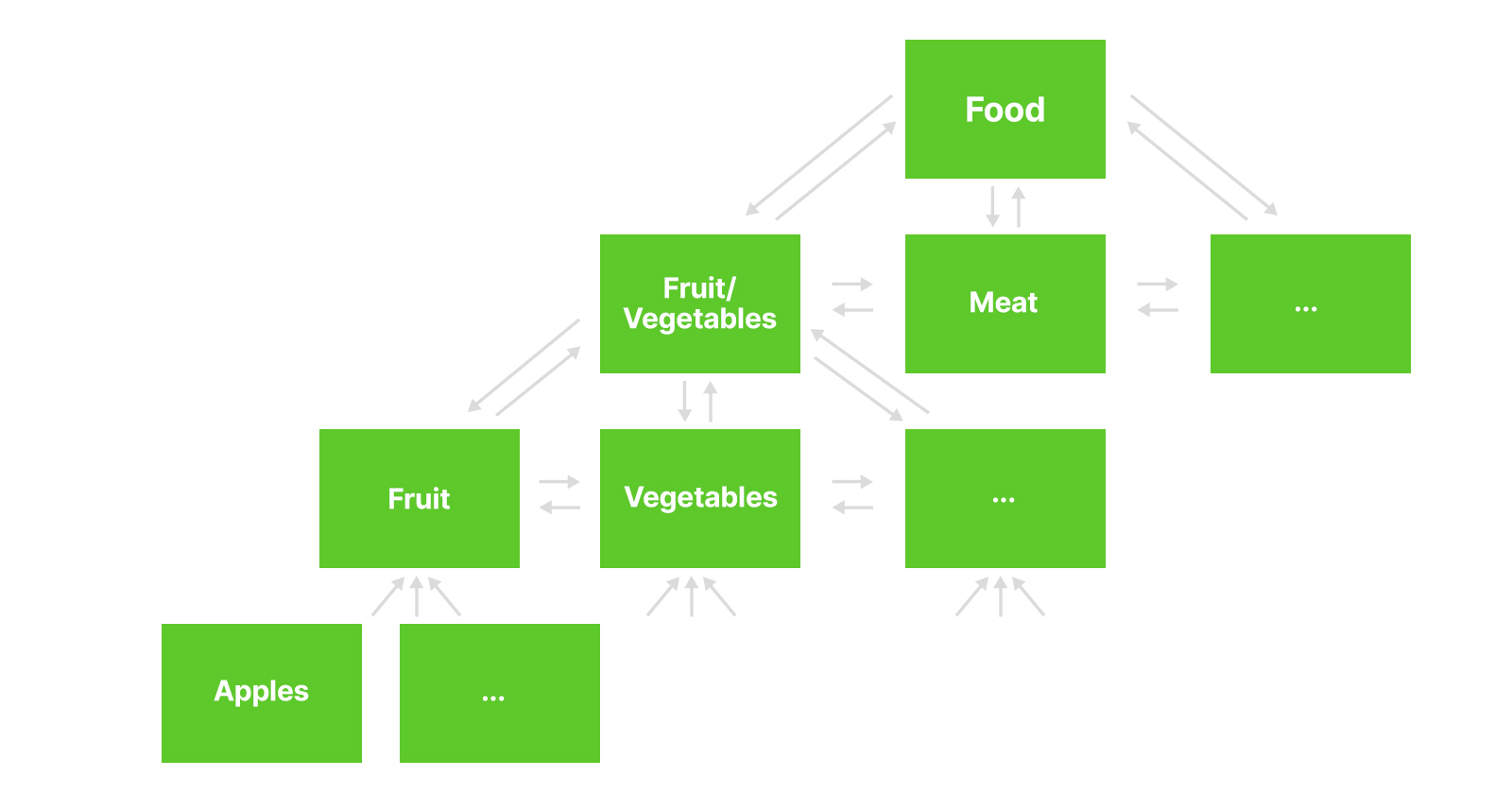

The name of the game is:
- One article per keyword (cluster) (e.g., one piece for “apple/apples”).
- Respect the relationship between your articles (ontology or content hierarchy). Everything about “fruits,” in general, goes on that parent page/category page.
- Make it clear to users and search engines what the one concept/topic for every article is: Only talk about “apples” in the “apple” piece.
The goal to create the best content piece on “apples” will determine the content length.
How Articles Rank: Satisfying Intent, Appropriate Word Count & Backlinks
If we then keep in mind what page one competitors are currently doing in terms of content length, satisfying the search intent, giving the best answer, and inviting users to convert – we not only have created a piece of content that will rank well itself – we have also created a piece that makes a great backlink target that will lead to successful rankings.
It’s Time To Move On From Word Count Obsession
In the early days of SEO, ranking highly for a keyword generally meant jamming that word or phrase into your content anywhere it would go. Those days are long gone, and gone with them are the hard and fast requirements for content length.
Yes, this article asserts that longer is often better for SEO purposes, but it’s for a more roundabout reason than you might think. And a higher word count alone will not help you rank higher.
Instead, you need to create quality content with the information searchers want.
Remember why users are coming to your page; satisfy their intent and give them what they seek.
By doing this, you’ll also make your content an appealing backlink for other content creators. And speaking of which, it’s a good idea to perform outreach initiatives to build incoming links and build your site’s credibility in Google’s eyes.
More Resources:
Featured Image: A Lot Of People/Shutterstock
In-post images #3-5: Paulo Bobita/Search Engine Journal
